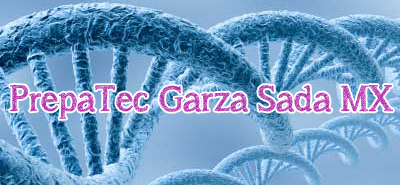Team:PrepaTec GarzaSadaMx
From 2012hs.igem.org
(→Project) |
(→Project) |
||
| Line 62: | Line 62: | ||
With our enzyme applied to the E. coli, the natural tyrian purple dye made by mollusks will be re-created by our E. Coli and therefore no more mollusks would be unnecessarily killed and a bright, long-lasting and really cheaper tyrian purple dye would be available for textile industries. | With our enzyme applied to the E. coli, the natural tyrian purple dye made by mollusks will be re-created by our E. Coli and therefore no more mollusks would be unnecessarily killed and a bright, long-lasting and really cheaper tyrian purple dye would be available for textile industries. | ||
| + | |||
| + | |||
| + | '''Abstract''' | ||
| + | |||
| + | |||
| + | |||
| + | The purpose of this experiment is to obtain Tyrian purple in a more environmentally friendly and efficient way than the one commonly used nowadays. It’s known that the mollusk Bolinus Brandaris is killed in order to obtain this dye, thus we used the recombinant DNA techniques in order for the E. coli to produce Tyrian purple. We inserted two genes in E. coli for it to generate two enzymes which induce the reactions that have indigo as the final product. After a chemical process, known as halogenation of benzene, indigo is turned into Tyrian purple. This process needs the usage of a catalyst called BFe3 in order for it to occur. The reason why we decided to do this project is because we believe it´s essential that these species are kept from being endangered. The importance of this is related to the fact that it´s significant to maintain the biodiversity of species in the planet, also as a way of preventing the disruption of the balance of the ecosystems. | ||
===Notebook=== | ===Notebook=== | ||
Revision as of 02:21, 9 June 2012
- a team description
- project description
- safety information (did your team take a safety training course? were you supervised in the lab?)
- team attribution (who did what part of your project?)
- lab notebook
- sponsor information
- other information
Example: 2012hs.igem.org/Team:PrepaTec_GarzaSadaMx/Our_Pets
| You can write a background of your team here. Give us a background of your team, the members, etc. Or tell us more about something of your choosing. | |
|
Tell us more about your project. Give us background. Use this as the abstract of your project. Be descriptive but concise (1-2 paragraphs) | |
| Team PrepaTec_GarzaSadaMx |
| Official Team Profile |
|---|
Contents |
Team
Tell us about your team, your school!
Project
What are you working on this semester?
What we want to do is to insert a specific enzyme in the E. Coli for it to be able to create a textile dye, which is known as tyrian purple.
Tyrian purple is known to be the world’s most expensive color, about $3,500 U.S. dollars per gram. This dye is known by the ancient cultures as: royal purple, imperial purple or imperial dye, the colors of the royalty, because it did not fade out, but became more intense with weathering and sunlight. It’s obtained by a specific mollusk, the Bolinus Brandaris, but due to its small size, the Byzantine Empire, which controlled the production of this coveted dye, needed to kill a large number of sea snails to obtain relatively small amounts of dye. Nowadays industries are not allowed to use this dye, even thought its color has been imitated with chemicals, but since it’s nothing more than an imitation it’s not as purely bright and long-lasting colored as the real natural tyrian purple.
With our enzyme applied to the E. coli, the natural tyrian purple dye made by mollusks will be re-created by our E. Coli and therefore no more mollusks would be unnecessarily killed and a bright, long-lasting and really cheaper tyrian purple dye would be available for textile industries.
Abstract
The purpose of this experiment is to obtain Tyrian purple in a more environmentally friendly and efficient way than the one commonly used nowadays. It’s known that the mollusk Bolinus Brandaris is killed in order to obtain this dye, thus we used the recombinant DNA techniques in order for the E. coli to produce Tyrian purple. We inserted two genes in E. coli for it to generate two enzymes which induce the reactions that have indigo as the final product. After a chemical process, known as halogenation of benzene, indigo is turned into Tyrian purple. This process needs the usage of a catalyst called BFe3 in order for it to occur. The reason why we decided to do this project is because we believe it´s essential that these species are kept from being endangered. The importance of this is related to the fact that it´s significant to maintain the biodiversity of species in the planet, also as a way of preventing the disruption of the balance of the ecosystems.
Notebook
Show us how you spent your days.
Results/Conclusions
What did you achieve over the course of your semester?
Safety
What safety precautions did your team take? Did you take a safety training course? Were you supervised at all times in the lab?
Attributions
Who worked on what?
Human Practices
What impact does/will your project have on the public?
Fun!
What was your favorite team snack?? Have a picture of your team mascot?
<forum_subtle />
 "
"

